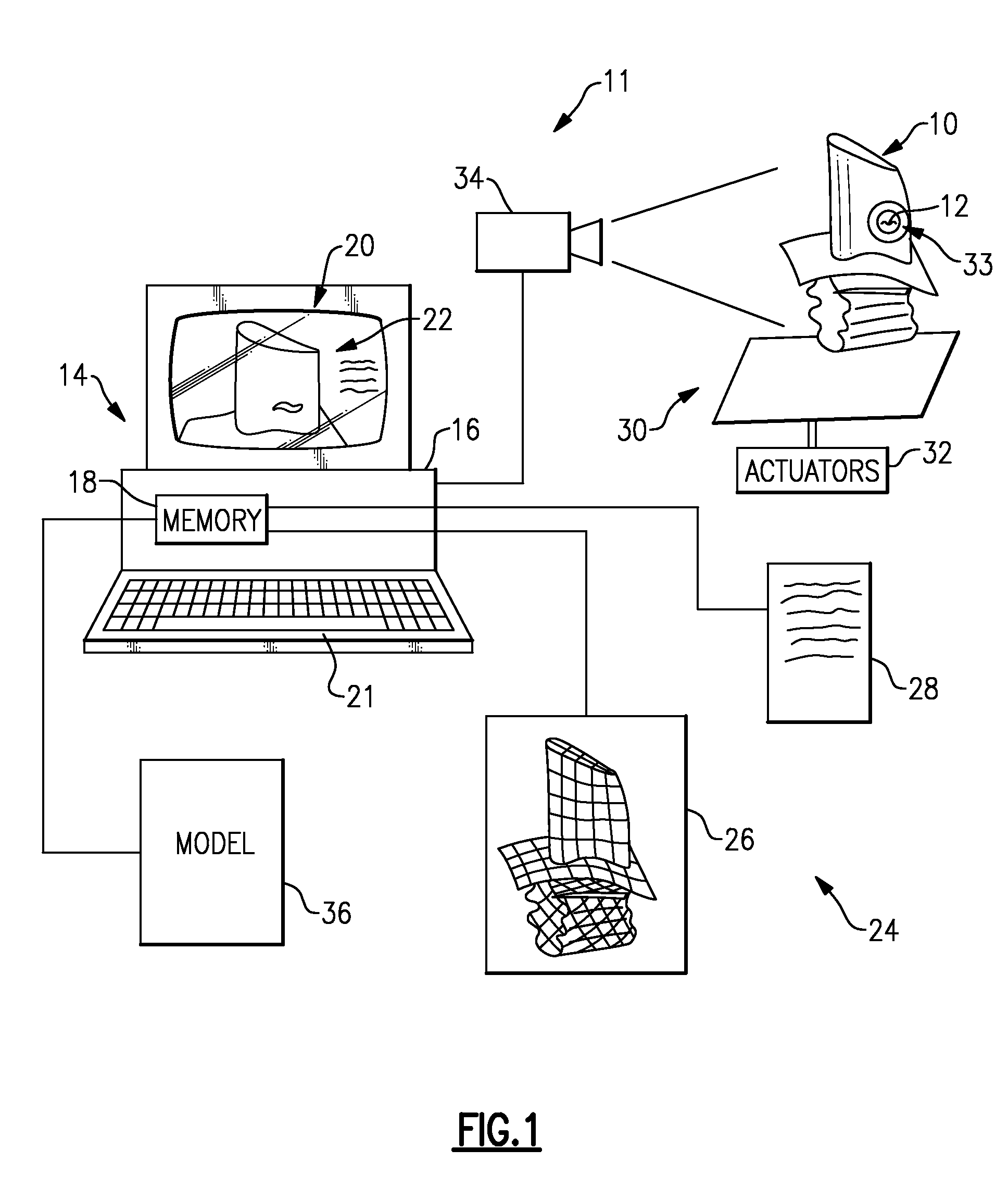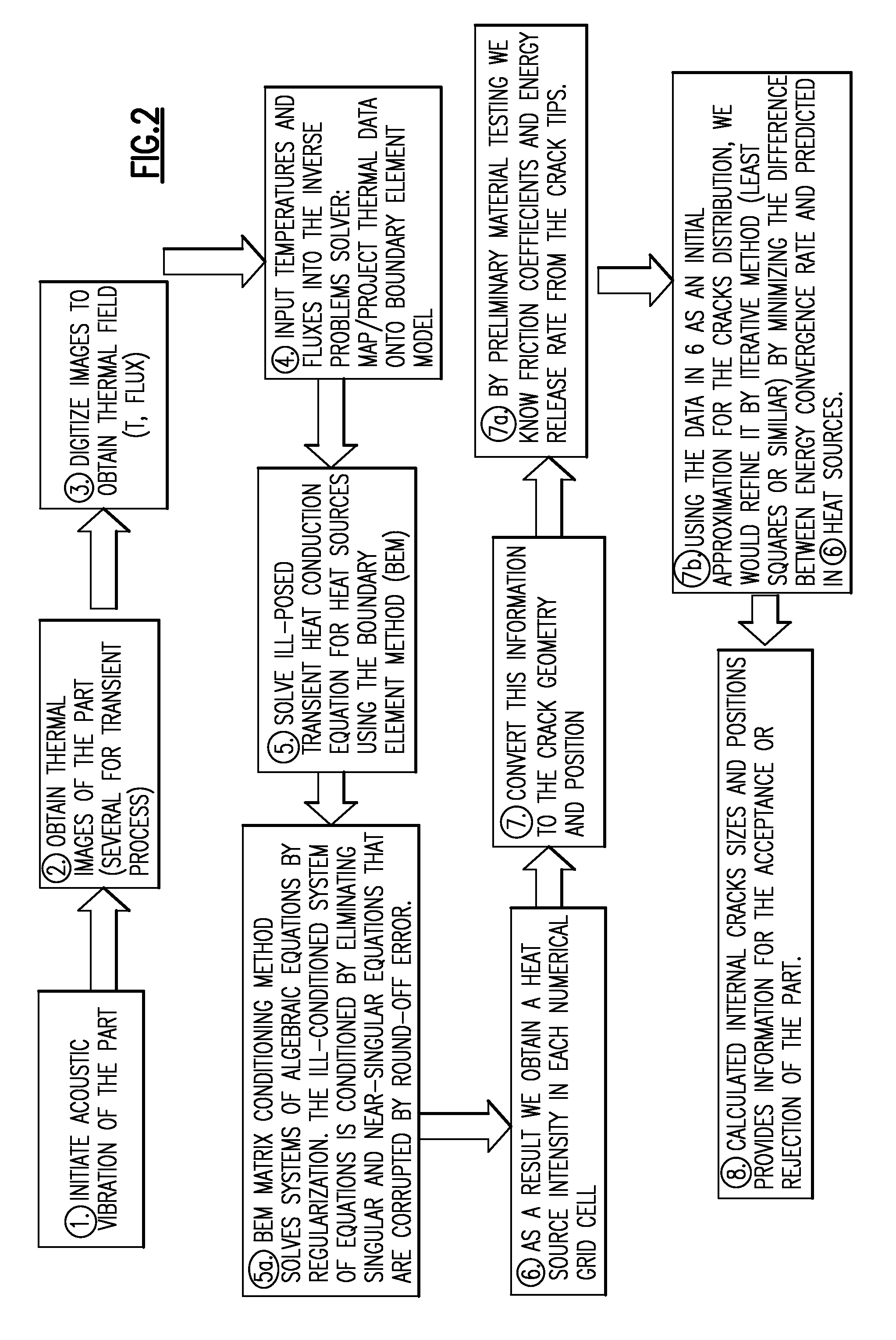Inverse thermal acoustic imaging part inspection
a technology of inverse thermal acoustic imaging and part inspection, which is applied in the direction of optical radiation measurement, specific gravity measurement, instruments, etc., can solve the problem of difficult detection of parts flaws
- Summary
- Abstract
- Description
- Claims
- Application Information
AI Technical Summary
Problems solved by technology
Method used
Image
Examples
Embodiment Construction
[0009]An inspection system 11 for identifying features within a part 10 such as a flaw is illustrated in FIG. 1. The inspection system 11 can be fully automated. The part 10 having a flaw 12 is mounted on a vibration device 30 that is excited using multiple actuators 32 of different frequency. The vibration device 30 may be a shaker table or ultrasonic devices capable of vibrating the part 10 in a range of, for example, 500 Hz-100 kHz.
[0010]Due to the vibration imparted on the part 10 by the vibration device 30, heat is generated at any flaws or cracks within the part 10 due to friction and plastic deformation during each loading cycle. This heating, which is illustrated schematically at 33, results in a temperature rise over the nominal structure temperature of the part 10. The temperature rise caused by a crack is distributed over a range wider than the strained distortion and, hence, can be detected using an infrared camera 34, for example. Images of the exterior of the part 10 a...
PUM
| Property | Measurement | Unit |
|---|---|---|
| thermal image | aaaaa | aaaaa |
| heat transfer | aaaaa | aaaaa |
| transient inverse heat conduction equation | aaaaa | aaaaa |
Abstract
Description
Claims
Application Information
 Login to View More
Login to View More - R&D
- Intellectual Property
- Life Sciences
- Materials
- Tech Scout
- Unparalleled Data Quality
- Higher Quality Content
- 60% Fewer Hallucinations
Browse by: Latest US Patents, China's latest patents, Technical Efficacy Thesaurus, Application Domain, Technology Topic, Popular Technical Reports.
© 2025 PatSnap. All rights reserved.Legal|Privacy policy|Modern Slavery Act Transparency Statement|Sitemap|About US| Contact US: help@patsnap.com



